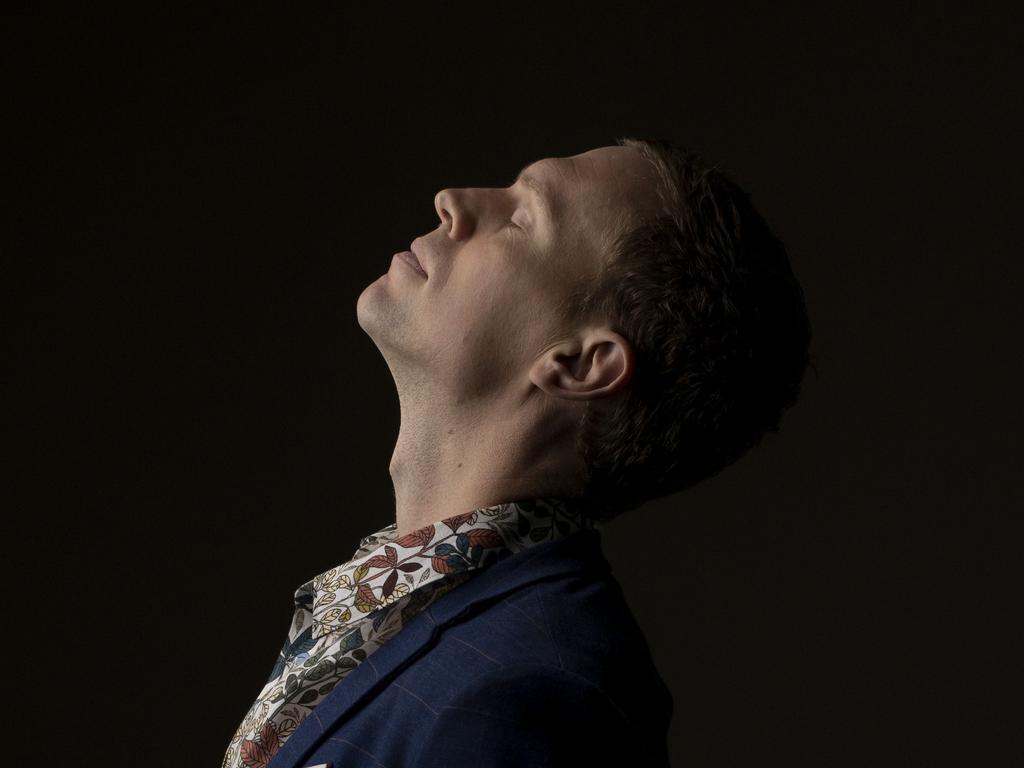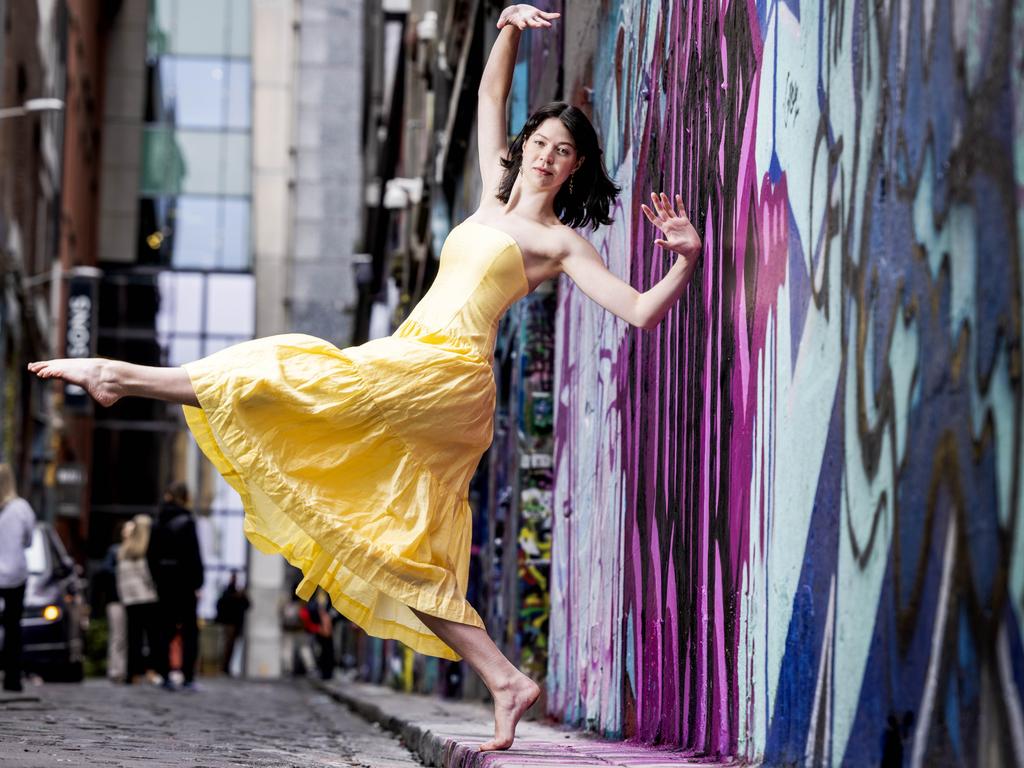How Australian Ballet lured world’s greatest ballet dancer Sylvie Guillem out of retirement
After finding peace living by an olive grove, Sylvie Guillem has returned to Australia to mentor a new generation of dancers. But gone are the days of ‘Mademoiselle Non’.
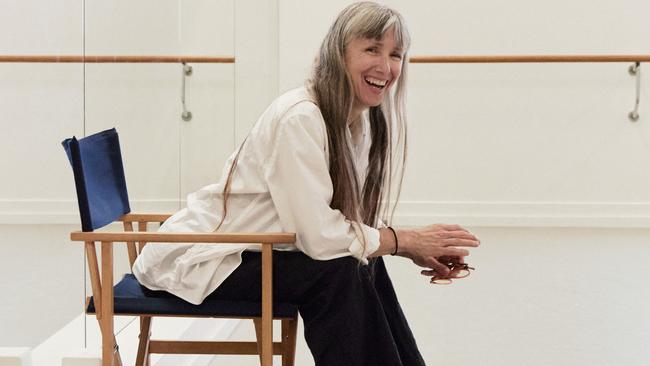
When Sylvie Guillem brought the curtain down on her dance career in 2015, she chose as her farewell not a solo from the classical canon or a contemporary firecracker, but something with a bit of showbiz pizzazz.
Maurice Bejart’s Bolero has Guillem dancing on a red table-top, arms moving seductively in unison, her body flexing rhythmically to the slow burn of Ravel’s music.
The New Year’s Eve performance was broadcast live on TV in Japan. As the clock counts down the seconds, the music builds to its shrieking climax, and at the stroke of midnight Guillem drops to the floor. Blackout.
Of course, Guillem, 50 at the time, had planned the moment carefully. She is not one to do things by halves. Just as, in 1989, when she walked out on Rudolf Nureyev and the Paris Opera Ballet, there would be no turning back from this final performance, no misgivings or second thoughts. Je ne regrette rien.
“You make a decision to leave, to stop, to put things behind you,” Guillem says now. “I decided that it was the right moment, because I knew what I wanted to do after. I could not have taken a decision knowing that I would automatically and right away regret it. It’s a very hard decision to make, to leave everything behind.
“I had all year to think about it ... but I knew what it was going to take, the amount of courage and sadness. And I didn’t do it to regret it. So, I knew that my state of mind after would be OK, it’s a new life and I’m happy with it.”
She retired to her olive grove and menagerie of animals and the way she describes it, the peace and solitude is a kind of blessing.
“I have donkeys, I have dogs. I had four but unfortunately two died recently. And bees. I try to give those animals what they had before. I try not to work the land, I try to keep everything like it was, because we have less and less space. When I left cities, and the theatre, the only thing I knew is that I wanted space.”
Guillem, now 58, is less the forbidding figure she was at the height of her career, when her reputation for blunt refusal earned her the nickname Mademoiselle Non. In a phone conversation, there is no sign of her legendary haughtiness. She is chatty – her accented English is near idiomatic – while politely protective of her privacy.
She has kept a low profile since her official retirement seven years ago, but she has not quit the dance world entirely. She has started to accept engagements as a coach, sharing her expertise and undimmed artistry with the next generation. That’s what has brought her to Melbourne and to the Australian Ballet where she is working with principal dancers on a new production of Don Quixote.
She is no stranger to the Australian company – she first danced with the AB in Bejart’s Bolero for the Olympic Arts Festival in Sydney, in 2000 – but this is the first time she has come as a coach. As the Australian Ballet’s artistic director, David Hallberg, explains, the reasons for asking her are self-evident.
“She’s Sylvie Guillem,” he says. “One of – if not the – greatest dancers of her generation. There is a myth to her, a legend to her. A little like certain actors in Hollywood, there is no one who doesn’t recognise Sylvie’s impact on the ballet world and the dance world, and her contribution, her dedication and her work ethic.
“She retired in 2015 and she hasn’t done very much since. I thought, why not offer her the opportunity to come to the company and work on repertoire that she knows really well. She holds amazing experience and knowledge of the art form, and of roles, particularly Don Quixote.”
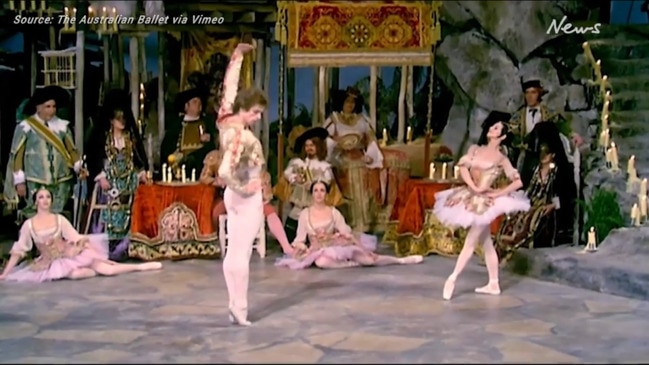
The company is mounting a new production of Don Q, a kind of live-action remake of Nureyev’s celebrated 1973 film. Nureyev directed and danced as Basilio in the film that was made with the Australian Ballet and featured Robert Helpmann as Quixote and Lucette Aldous as Kitri.
Guillem, of course, has impeccable credentials, having been a protegee of Nureyev and danced with him in his Don Quixote. As her storied resume recalls, Nureyev spotted her among the junior ranks of the Paris Opera Ballet, where he was director. She was still a teenager – and not yet appointed to the starry echelon of etoile – when he invited her to dance her first solo role, the Queen of the Dryads, in his Don Quixote. Later, she would dance the spirited, virtuoso role of Kitri to his Basilio in the same ballet.
Dancing with Nureyev was incredible, she says, even if she was much younger and a little too tall for him.
“He was great, he was witty, he was alive, he was intelligent – there was something happening,” she says.
“Also I think he really liked to present young dancers. He took me to La Scala. At the Paris Opera, all he could think was to give the chance to young dancers to go for it. That was his generosity.”
Like Nureyev, Guillem is a singular artist not given to compromise or able to disguise her rare individuality. As Hallberg remarks, “when she did Juliet, or Aurora, or Kitri, she did it absolutely as her own self – she didn’t do it the way people told her”. So how did she and Nureyev work together? Was it a case of polar attraction or opposition?
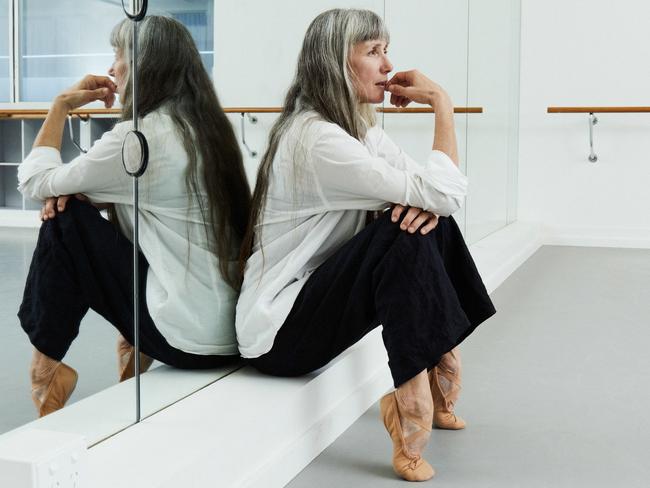
“We had the same kind of vision,” she says. “We are two performers, and we want to produce something that is great for the audience that comes – there is no compromise on that.
“He was, of course, the director and a sort of teacher. He was teaching me things without being a teacher. I just had to look. It was his choreography so he had some demands that I was very happy to do. But when we were on stage, and we represented as a couple, it was as a couple. When in Giselle, he was looking at you, he turns slightly the face of Giselle towards him, he is the prince that you fall in love with, and he is the prince in love with Giselle. He was not Rudolf Nureyev at that point. He might have been during the bows, before and after the show, but on stage he was just a performer who was there to do the best. And on that field, we met very easily, without any problem.”
An aspect of Nureyev’s personality that was sometimes obscured by his charisma and self-possession was his generosity. Yes, he was an individual, but not in the sense of being selfish, Guillem says.
“Rudolf was really part of what he was doing. He wanted it to be not only for him, he wanted it to be a show. He put all of his energy and his courage into making the best show. He thought a lot about the others. OK, he had a bad temper. Sometimes maybe also I had a bad temper, and I don’t really agree with that. You have no compromise, it has to be the best, and you have to give everything to produce that, to be able to give it. On that, we completely agreed.”
In 1989 Guillem famously quit the Paris Opera Ballet and, asserting her independence, became a principal guest artist with the Royal Ballet in London. What were her feelings about leaving Nureyev in that way?
“Of course, I was sad,” she says. “But again, there was no compromise on that question. And Rudolf, I guess, knew that. Because Paris Opera Ballet is a big boat, there is a lot of administration, a lot of rules, a lot of people to take care of. When you are young you don’t want to lose time with that. And if there was one person knowing that, it was Rudolf. No time to lose.
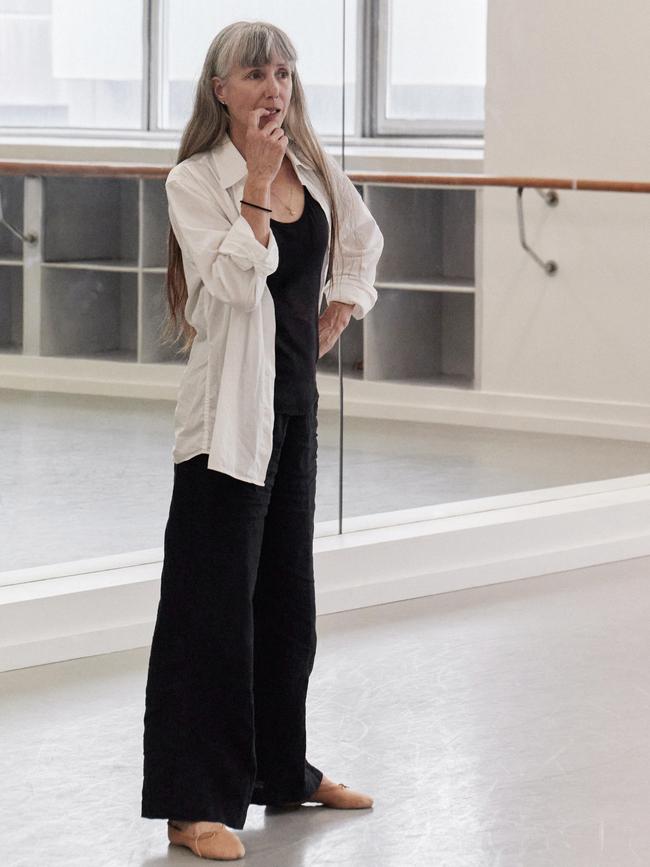
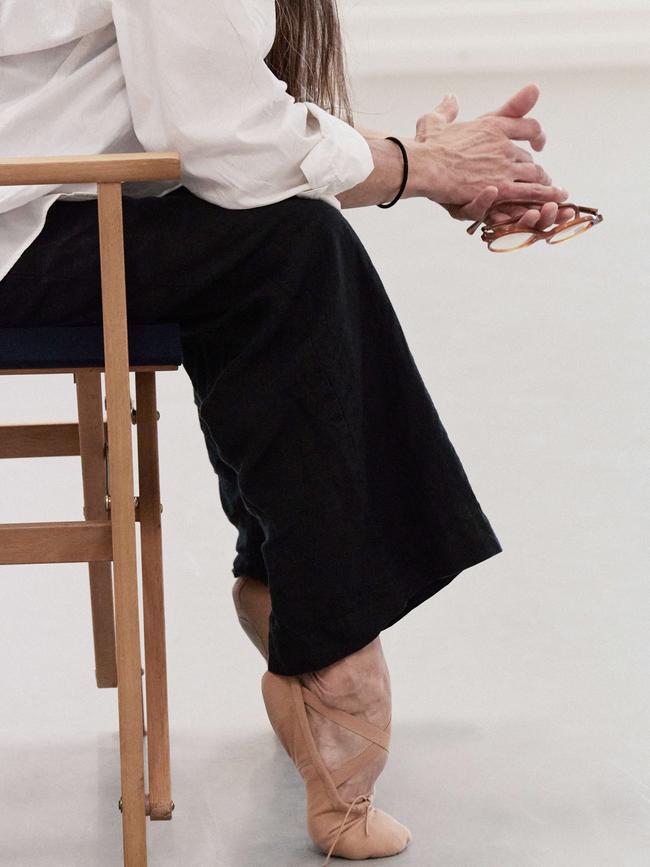
“Yes, I was sad to leave him, because I really loved that man. He was unique, frankly. It’s difficult to look around now and see someone special like that. He was visionary, he was an animal, he had a lot of instinct, a very hard worker. He was exceptional, and you do miss exceptional people.”
Nureyev made his version of Don Quixote, after Marius Petipa’s original, on the Australian Ballet for the 1970 Adelaide Festival, where he and the ballet company were guest artists. Helpmann was the festival’s artistic director that year. Later, a syndicate including Helpmann produced the film of Don Quixote, still regarded as one of Nureyev’s remarkable on-screen performances.
It was filmed in an aircraft hangar at Melbourne’s Essendon Airport, with Barry Kay’s set and costume designs from the original stage version. It’s a recreation of the film – complete with opening titles – that’s now being staged, with set designs by Richard Roberts based on Kay’s originals. The production, including Guillem’s contribution behind the scenes, has been supported by the Australian Ballet’s community of philanthropists.
“People who know the film well will recognise the sets and the costumes, but people who don’t know the film well will experience a Don Quixote that is very cinematic,” Hallberg says. “The sets are very lush, kind of over the top. There are no painted castles and landscapes, like there is maybe in Giselle. It is very realistic. When you are watching a film set, it’s very realistic, it’s seen in real time, and it’s the same that’s being interpreted for the stage.”
There has been a frisson of excitement around the rehearsal studios, Hallberg adds, since Guillem arrived last week.
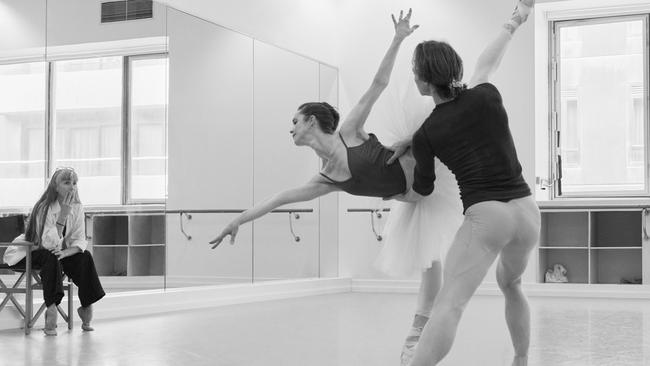
She has been working mostly with the principal dancers in the key roles of Kitri and Basilio, including Ako Kondo, Chengwu Guo, Jill Ogai, Brett Chynoweth, Sharni Spencer and guest artist Daniil Simkin, visiting from American Ballet Theatre and Berlin State Ballet.
Guillem says her job as coach is less to do with working on the dancers’ technique – “Everyone knows how to dance very well, I don’t think they need me for that” – and more with what she calls the logic of the performance. It’s the integration of technique, virtuosity and artistry that comes together in the creation of a believable on-stage character.
“It’s to make them understand the character and what they are saying on stage,” she says. “Dancing is one thing. You work on it every day, you have the class, you have the technique. They know how to work on that. But to integrate this plus the logic of the character, and the story, for me is very interesting.
“It’s like a dialogue: when you speak clearly, and the phrase is correct, then the audience understands. If your partner speaks one language, and you speak another one on stage, there will be a lot of talking but no understanding. This kind of logic: why you are doing things, and what does it mean.”
Similarly, Guillem has followed the logic of her own will. True to intention, she called time on her on-stage career with that stroke-of-midnight Bolero. The fabulous technique that could dazzle the eye – her almost supernatural extension, legs at six o’clock – is now the stuff of memories, photos and video clips. The split with classical ballet – and with the contemporary choreography she danced in later years, including collaborations with Russell Maliphant and Akram Khan – is complete. She is open to occasional engagements as a coach – “I’m not sure that I want to do it every day, the whole year, but for special demand,” she says – and there is the intriguing connection with the Sydney Choreographic Centre, where she is international patron. She dropped in on the centre’s artistic director, Francesco Ventriglia, before arriving in Melbourne, but is mum about what her plans there may be.
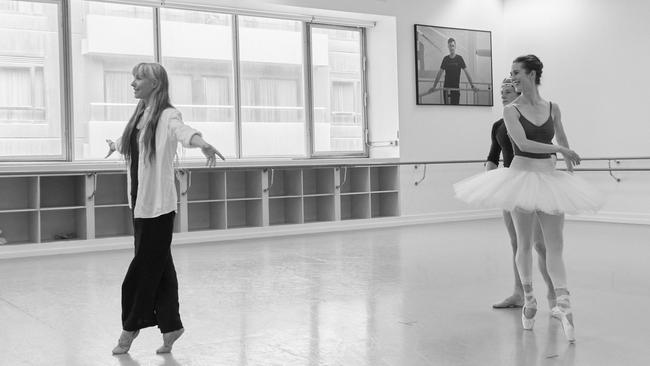
Still, old ballet habits die hard. She has a studio at her rural retreat where she keeps to an almost daily regimen of barre exercise and pilates, as she has always done.
“I needed to do it, because it is impossible to stop like this, and expect the body to cope with such drastic change,” she says. “I kept doing barre and pilates – and a lot of work in the garden, planting, digging. It’s a different kind of exercise.”
She loves spending time in nature and being with her animals. It’s as if the pressure valve has finally been released.
“I realised that it’s sort of living on another planet when you are in the ballet world,” she says. “It’s your life: you wake up, you are a dancer; you go to rehearsal, you are a dancer; the way you eat, because you are a dancer; when you travel, you are a dancer. It’s not the life of someone who has time to think, to go on holidays, even when we are on holidays we can’t really stop. Everything is concentrated in that focus.
“To get out of that focus, and that discipline, the regular thing that you do every day, the pattern of life, I needed to adapt a little bit to that freedom and to learn how to enjoy it. It’s an adjustment that takes time.”
Don Quixote is at Arts Centre Melbourne, March 15-25; and the Sydney Opera House, April 8-25

